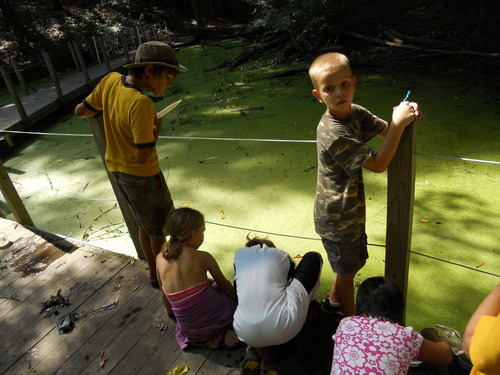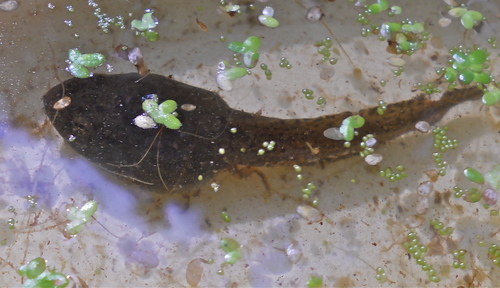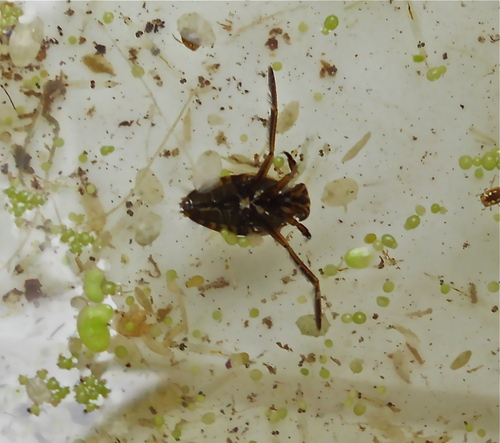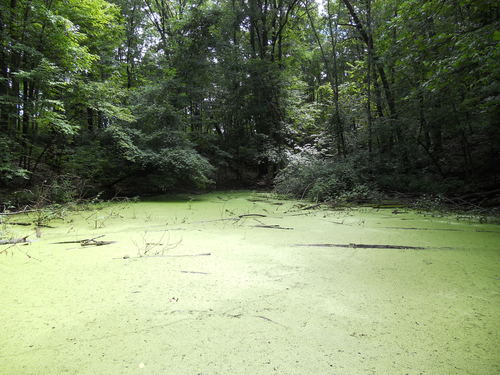Pondcast 31: Day campers brave biting backswimmers

Leslie Science and Nature Center day campers collect samples of aquatic organisms from Black Pond.
Black Pond during Week 31 was filled with the usual crowd of summertime critters: phantom midge larvae, backswimmers, giant water bug nymphs, a spider on top of the water, green frogs, green frog tadpoles with and without legs, a painted turtle, a red dragonfly and day campers.

Green frog tadpole with legs.
This week, one of the Leslie Science and Nature Center day campers observed first-hand, the incredible biting powers of the backswimmer, a “true bug” of the insect family Hemiptera. While attempting to extricate one of these insects from her sample, she was bitten on the hand and it hurt. Luckily, a few minutes later, she made a complete recovery and enjoyed the rest of the visit to the pond.
Backswimmers don’t actually bite. Being a true bug, they possess mouthparts that can pierce through even the toughest exoskeleton of other aquatic organisms, even other backswimmers. Adult backswimmers will even eat backswimmer nymphs.

Backswimmer - a “true bug” from the insect order Hemiptera.
Once their prey has been pierced, the backswimmer will release chemicals that will paralyze small prey and begin to digest their tissues. While the initial piercing is painful, it is these chemicals that really hurt - even more than the sting of a yellowjacket wasp. Some people are probably more sensitive to these chemicals than others, and a longer period of piercing is likely to involve more chemical being released.
After the prey is immobilized and the digestive chemicals turn their tissues into soup, the backswimmer will suck out the prey’s innards for a hearty meal. When sampling in a pond and collecting tadpoles along with backswimmers and other aquatic hemipterans, it is imperative to separate them into different containers. Confined tadpoles become easy targets for these predators.
Backswimmers do possess wings and will fly between sources of water, usually at night. They are attracted to artificial lights and will infiltrate swimming pools. So when dealing with these critters, it’s best to use a net to collect them.

Black Pond on 4 August 2010.
You can see all the Pondcast videos by visiting the YouTube channel of Stefan Szumko, AKA slugwhisperer at http://www.youtube.com/user/slugwhisperer. Stefan can be contacted at slugwhisperer@gmail.com.

